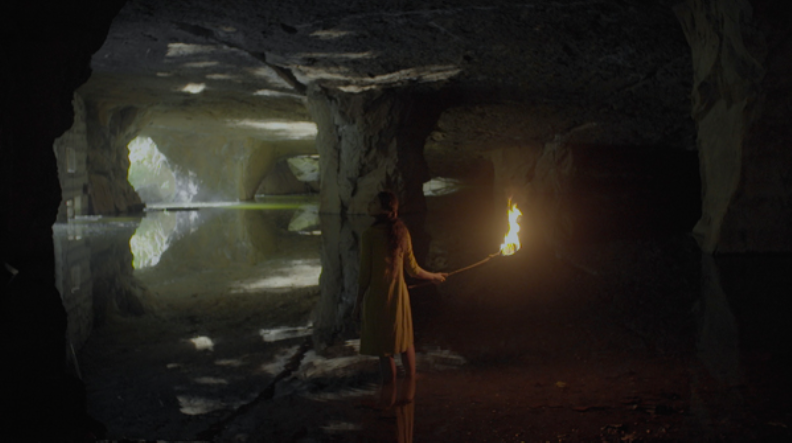The term ‘algorithm’ to many humanities-oriented people may seem like an abstract concept. One might understand it as a theoretical construct, but not necessarily grasp its practical application or its physical structure. Nonetheless, people are becoming more aware that algorithms are everywhere.
It is almost impossible to count the number of times we apply algorithms in our every day lives. If you scan your Facebook profile, it is an algorithm that determines the types of ads surrounding your news feed. When you go on a news app, algorithms will first determine your location and based on that will choose articles that might interest you. When checking Youtube, all the suggested videos are selected appropriating previous channels you may have visited and are generated by you guessed it – an algorithm. The Youtube algorithm has, in fact, becoming the subject of much debate within the Youtube community recently.
However, it is not only social media or other online platforms that use specific code to cater to one’s individual experience. “Modern culture has a tendency to use algorithms, codes and simulations to predict and pre-empt the possible outcomes of existing processes,” according to an article on the Frieze website, which is a resource for contemporary art and culture. As explained by Timotheus Vermeulen, an associate professor in Media, Culture and Society at the University of Oslo and writer for Frieze, the algorithm can pose ‘what if’ questions. The algorithms that are used for predictions can be found in mathematics, coding, economic risk assessments, or even when analyzing societal trends. Bankers may use algorithms to assess developments of a stock, while hospitals and clinics that provide health insurance will use certain determinants to speculate the likelihood of a patient having heart failure or cancer in their future. In short, the algorithm devises virtual futures within the framework of an actual present.
If algorithmic predictions are made based on an actual version of reality, then what would we call predictions made within a constructed, non-existent, virtual world? Vermeulen proposes the term ‘altergorithm’, which poses ‘as if’ questions as opposed to ‘what if’ ones. This altergorithm, a name that borrows from the word alternative, in his use of the phrase, “refers to practices that envisage alternative, often impossible scenarios through algorithmic modeling, (…).” Or, in other words, it delineates an actual probable future based on a non-existing and virtual present. This ‘as if’ scenario does not only change the variables, but also the seemingly constant elements to the algorithm in its predictions – the present. Such an approach may stimulate a debate on a certain issue and help look at it in a completely different way, despite it not having any truthfulness to its predictions or basis in the reality of that issue.

Many artists use this innovative concept to devise new virtual worlds and probable scenarios within this constructed world, in order to help its audience think about the real world in a fresh light. Cheng Ran, is an emerging Chinese artist and filmmaker, who is seen by the NewMuseum as “one of the most promising Chinese artists of his generation.” His 2016 multi-work titled ‘Diary of a Madman’ is a video exploring the dangers and risks of the anthropocene in a not so explicit manner. The film adopts a post-human perspective where the subject matter moves beyond the relationship between man and nature, and explores more so the relationships humans have with themselves and one another. The familiar settings of human life and the city become de-familiarized as man-made environments become sprawling landscapes. Although this work does not explicitly use an algorithm to create predictions within this constructed reality, it does allow the viewers imagination to reach beyond the confines of this virtual landscape and explore the possibilities that it can offer, which can then be applied to our world, and hopefully, give a new perspective on what it all means.
Another artist, Ed Atkins, created a digital performance titled Ribbons, (2014), in which an avatar impersonating Atkins himself delivers monologues, which discuss themes such as the meaning of life. This disembodied, CGI head stumbles down an endless flight of stairs, smokes virtual cigarettes, while making heartfelt love declarations, and goes on rants about insane theories that viewers cannot possibly understand, as they only exist within the premises of his reality. This avatar is a hybrid, living outside of our realm in the digital space, but a digital space that exists in real life, nonetheless. As described eloquently, by Vermeulen, this simulation “does not present a scenario of a possible future, but a post-human stream of consciousness of the present that raises questions about both the sustainability of that present and the possibility of any one future story at all.”
Ran, Atkins, and many other artists and writers create models of made-up worlds with entirely constructed histories and futures that develop differently from ours, by using real-life tools and techniques for making probable predictions, such as using algorithms. Although, the altergorithm is not based on an existing scenario, through creating virtual realities just like Ran or Atkins, we can comment on tangible sequences of events in ways never thought imaginable.


Recent Comments